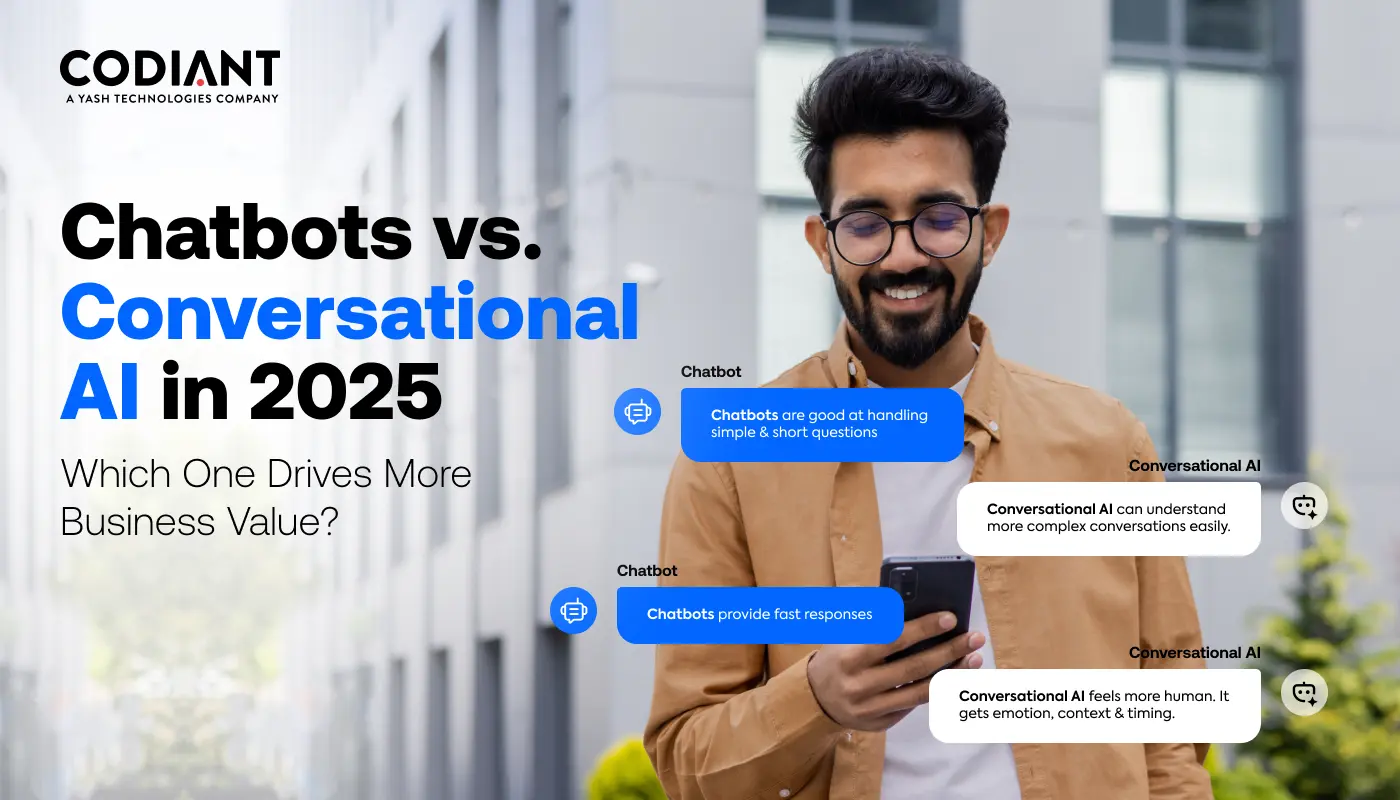Precision Agriculture: Transforming Farming with AI and Data-Driven Insights
Table of Contents
Subscribe To Our Newsletter

In recent years, precision agriculture has gained prominence within the agricultural industry. This approach integrates artificial intelligence (AI) and data-driven insights to revolutionize traditional farming methods. Precision agriculture is increasingly recognized for its role in modernizing farming practices, delivering numerous advantages, and advancing sustainability and efficiency.
Precision agriculture is fundamentally a comprehensive farming strategy that leverages advanced technologies to optimize various facets of crop production. Precision Agriculture Transform Farming with AI and data analysis to enhance crop productivity conserve resources and address environmental concerns.
The primary objective is to provide farmers with real-time information regarding soil conditions, climate patterns, crop health and other factors, for decision-making. Essentially precision farming empowers farmers to make accurate choices by leveraging data related to land, weather, crops and various other variables.
This empowers them to tailor their actions, encompassing irrigation, fertilization, and pest management, to meet the specific requirements of their crops. The result is improved productivity, reduced costs, and enhanced sustainability.
Continue reading to explore how precision agriculture harmonizes with nature to enable farmers to make more informed decisions and farm with unprecedented efficiency.
How Is Precision Agriculture Transforming Farming with AI and Data-Driven insights?
In precision agriculture, precision agriculture technologies such as AI, GPS, and data-driven insights are integrated for efficient farming. This approach improves the crop production through real-time information on soil conditions, climate, and crop health, empowering farmers to make accurate decisions. The result is enhanced productivity, reduced costs, and improved sustainability for the future of agriculture.
Application of Precision Agriculture
Precision agriculture optimizes farming practices using advanced technology. Its applications include VRT, GPS/GNSS tracking, remote sensing, and data analytics to enhance resource management, increase yields, and promote sustainable agricultural practices.
- Variable Rate Technology
VRT allows farmers to adjust input application rates like fertilizers, pesticides, and seeds across fields based on soil variability, optimizing yields while reducing costs and environmental impact. - Remote Sensing Technologies
RST such as satellites and drones, provide key data on crop health, moisture levels, and nutrient status. It helps farmers in informed decision-making for effective crop management. - Precision Irrigation systems
PIS like drip irrigation, equipped with VRT, deliver water more efficiently based on factors like soil moisture and weather forecasts. This enhances water savings and crop yields. - Crop Monitoring and Management Software
It integrates data from sensors, drones, and satellite imagery to monitor crop growth. Besides, it detects pests and diseases, and optimize management practices for timely interventions. - Data Analytics and Decision Support Systems
It analyzes diverse data sources to make data-driven decisions on crop management, resource allocation, and risk mitigation, enhancing profitability and sustainability.
How Data Analytics Is Transforming Agriculture?
Data analytics is kind of like the superhero of modern farming, swooping in to change the game for traditional farming methods. It’s like giving farming a supercharged upgrade, and we call it “Precision agriculture” or “Smart farming.” This whole deal involves bringing in fancy tech and loads of information to lend a hand to farmers, researchers, and farm businesses. They’re all about making smarter choices and growing stuff in the slickest way possible.
Now picture this: instead of taking wild guesses, farmers can tap into data to know precisely what their crops and animals need. They’ve got these cool gadgets and computers that collect info from every corner of the farm. It’s like having a team of experts helping them figure out the best way to use stuff like water, fertilizer, and pesticides. In a nutshell, they’re leveling up their farming game.
Here’s how data analytics is transforming agriculture:
- Data Collection and Insights: Utilizing sensors, satellites, and IoT devices in agriculture helps farmers to gather real-time data on soil conditions, weather, and crop health, enabling informed decisions for better outcomes.
- Predictive Analysis: Historical and current data are analyzed to predict crop yield, disease outbreaks, and market trends, aiding farmers in efficient planning and risk reduction.
- Optimized Crop Management: Data analytics tailors irrigation, fertilization, and resource allocation based on soil health, optimizing yield while minimizing resource wastage.
- Disease and Pest Control: Early detection via data analysis helps prevent disease spread. AI tools identify crop damage, guiding timely interventions for pest management.
- Prescriptive Farming Solutions: Data-driven recommendations guide farmers on crop choices, resource application, and timing, enhancing overall operational efficiency and output.
How Can Data-Driven and Digital Agriculture Transform Agriculture and Food Systems?
Given the increasing need, for food and the urgency to embrace methods it is crucial to incorporate data-driven and digitalized techniques in agriculture. This shift is vital, in guaranteeing food security minimizing harm and enhancing agricultural efficiency. Let’s take a closer look at each of these aspects:
Global Food Demand and Sustainable Agriculture
The population of the world is steadily increasing, with projections suggesting that by 2050, it could reach approximately 9 to 10 billion by statista. This demographic growth places immense pressure on agriculture to produce more food.
At the time traditional farming methods faced obstacles due, to climate change depletion of resources and degradation of land. We are increasingly required to increase food production while also minimizing harm to the environment and ensuring sustainability, in the run.
Addressing Challenges through Data-Driven and Digital Agriculture
Data-driven and digital agriculture are like the tech-savvy wizards of the farming world. They use technology, data analysis, and the magic of connectivity to supercharge everything about farming and food production. Imagine bringing in high-tech stuff like precision agriculture, fancy sensors, Internet of Things (IoT) gadgets, and even artificial intelligence (AI) to make farming smarter and better. It’s like giving farming a turbo boost with all the latest tech tricks! The benefits include:
- Precision Farming: Farmers can gather and analyse data about their fields’ specific conditions, including soil moisture, nutrient levels, and crop health. This information enables precise application of fertilizers, pesticides, and water, reducing waste and increasing yield.
- Predictive Analytics: By analysing historical and real-time data, predictive models can forecast weather patterns, pest outbreaks, and disease occurrences. This enables farmers to take proactive measures to mitigate potential threats and optimize production.
- Supply Chain Efficiency: Digital tools help streamline the supply chain by tracking products from farm to fork. This transparency enhances food safety, minimizes waste, and ensures better market access for farmers.
- Decision Support Systems: Data-driven insights empower farmers to make informed decisions about crop rotation, planting times, and resource allocation, leading to improved productivity and resource management.
Fascinating Figures
- Did you know? A McKinsey study suggests that these fancy digital farming gizmos might give global agriculture a whopping $500 billion to $1.5 trillion boost each year by 2030.
- The Food and Agriculture Organization (FAO) spills the beans: precision farming could cut down production costs by about 10-20% and pump up yields by 10-15%.
- Here’s a gem from The World Bank: those cool digital farming tools can be a real game-changer for the little guys, the small-scale farmers. They’ll get easier access to info, markets, and even money stuff.
How Precision Agriculture Technologies, such as GPS, IoT, and Sensors, Are Revolutionizing Farming Practices
Precision Agriculture Technologies like GPS, IoT, and sensors are reshaping farming by employing data-driven methods that enhance productivity and sustainability.
These technologies collaborate to offer real-time monitoring and predictive analysis, enabling informed decisions. GPS accurately locates equipment and crop attributes, forming the foundation for data collection.
IoT connects devices through the internet, collecting diverse data like soil moisture, temperature, and crop health. Sensors capture environmental data, including weather and pH levels. The integration of these technologies unfolds as follows:
- Data Collection: IoT sensors gather field data, transmitting it to a central database.
- Geospatial Context: GPS assigns geographical coordinates to collected data, aiding spatial analysis.
- Data Integration: Collected data from sensors and GPS merge in a central database, creating a holistic view.
- Real-Time Monitoring: Farmers monitor factors like soil moisture and crop health in real time, enabling swift decisions on irrigation and pest control.
- Decision Support Systems: User-friendly dashboards provide actionable insights, guiding planting, harvesting, and resource allocation.

AI in Agriculture
AI in agriculture uses AI technologies to improve farming practices. It has applications such as automation, predictive analytics, and disease detection. AI-powered robots can perform tasks like planting and harvesting, improving efficiency. Predictive analytics helps farmers make informed decisions on irrigation and pest control. AI algorithms can detect diseases in plants or animals through image analysis, enabling early action and reduced pesticide use. Overall, AI in agriculture increases productivity, optimizes resource allocation, and reduces environmental impact.
Apart from this, there are numerous benefits of AI in agriculture. Firstly, AI can help farmers reduce production costs by optimizing resource allocation and minimizing waste. By accurately predicting crop yield and quality, farmers can make better decisions about when to harvest and sell their produce, maximizing profits. Secondly, AI can contribute to sustainable farming practices (similar to AquaMIS). By efficiently monitoring and managing water usage, fertilizer application, and pesticide use, AI helps minimize environmental impact and reduce chemical usage, leading to more sustainable and eco-friendly agricultural practices.
Thirdly, AI can enhance food safety and security by quickly detecting and addressing disease outbreaks or pests. This allows farmers to take timely preventive measures, reducing crop losses and ensuring the availability of safe and healthy food for consumers.
ChatGPT and Precision Agriculture
ChatGPT is one of the most powerful tools in precision agriculture and can help farmers in a variety of ways. Let’s take a look at some of the specific use cases where ChatGPT can assist farmers in their agricultural practices:
Crop Management
ChatGPT can provide real-time advice on crop management techniques, including irrigation scheduling, optimal fertilization practices, and pest control. By analysing data such as weather forecasts, soil conditions, and crop growth patterns, ChatGPT can offer personalized recommendations tailored to individual farm requirements.
Disease and Weed Identification
Farmers often encounter plant diseases and weed infestations that affect crop health. ChatGPT can help identify these issues by analysing images or descriptions provided by the farmer. It can provide insights into the type of disease or weed present and suggest appropriate treatment methods or weed management strategies.
Monitoring Livestock Health
Livestock health is vital for farmers, and early detection of any health issues is crucial. ChatGPT can assist farmers by analysing symptoms and providing initial assessments of the health conditions of their animals. This early detection can help prevent disease transmission and improve the overall health of the livestock.
Market Analysis and Pricing
Having the right market insights is a big deal for farmers. It’s like having a compass in a vast field. ChatGPT can step in to gather and analyse market data, sort out trends, and give advice on what crops to grow, how to price them, and how to market them smartly. It’s like having a farming buddy who’s really good with numbers and knows the market like the back of their hand. They’ll look at things like past prices, how much stuff people want, and how markets go up and down. All this info helps farmers make savvy choices.
Benefits of AI in Agriculture
Increased efficiency: AI analyses data quickly, optimizing agricultural practices for higher yields, cost savings, and reduced resource wastage.
Precision farming: AI enables precision agriculture by applying resources like water, fertilizers, and pesticides, minimizing environmental impact and improving overall productivity.
Early detection and intervention: AI can detect anomalies, diseases, or crop stress, before they’re visible, allowing prompt action to prevent crop losses and minimize chemical use. While AI presents several benefits in precision agriculture, it is important to address these challenges to ensure the effective and responsible use of AI technologies in the agricultural sector.
Challenges of AI in Agriculture
Data Quality and Availability: Accessing high-quality data can be challenging in some agricultural regions, limiting the effectiveness of AI models. Privacy concerns and data ownership also impact data availability for AI applications.
Integration with Existing Systems: Implementing AI solutions like ChatGPT into existing agricultural systems can be complex due to compatibility issues, cost barriers, and the need for specialized training.
User Trust and Understanding: Building trust in AI systems among farmers is crucial for widespread adoption. Farmers may require education and awareness about AI technologies to understand how it works.
The future of precision agriculture looks bright with advancements in AI and technology. Expect better disease prediction, pest control, and automated tasks like planting. This integration of technology and farming boosts sustainability, productivity, and helps farmers make smarter decisions. Despite challenges, precision agriculture offers solutions to revolutionize crop cultivation, ensuring food security for all.
How Precision Agriculture Will Answer Global Food Security in The Future
Here is an interesting story about a farmer named Jack. He used to farm the traditional way, relying on estimation and experimentation to manage his crops. He wasted a lot of water, fertilizer, and pesticide, and his yields were low and inconsistent. He was struggling to make ends meet and feed his family. Then he discovered precision agriculture. It was like a magic wand that transformed his farm into a high-tech wonderland.
He used drones, sensors, and GPS to monitor his fields and apply the right amount of resources at the right time and place. He used data analysis and weather forecasting to make smart decisions on crop management. He used technology to optimize his efficiency, productivity, and sustainability. He was surprised by the results: his crops grew faster and healthier which eventually resulted in a decrease in environmental impact. He felt like a superhero who could save the world from climate change & hunger.
Well, this is not a fairy tale; this is precision agriculture. It’s not just a buzzword; it’s a game-changer that can help us feed the world in the future without harming the planet. So, here’s how precision agriculture will impact global food security in the future:
- Efficient Resource Allocation: Picture this – precision agriculture acts as a farming GPS, guiding farmers to manage their resources like water, fertilizers, and pesticides with laser-like precision. This means less waste and more bang for the buck.
- Yield Maximization: Thanks to nifty tech toys like sensors, drones, and GPS, farmers get a super clear view of what’s happening in their fields. This intel lets them fine-tune stuff like watering, fertilizing, and pest-busting to score bigger harvests.
- Reduced Environmental Impact: Precision agriculture isn’t just about boosting yields; it’s also a planet-friendly pal. By using resources like fertilizers, pesticides, and water only where and when they’re needed, we’re reducing nasty stuff like water pollution and soil wear and tear.
- Data-Driven Decision Making: Think of precision agriculture as a farmer’s data butler. It collects info from sensors, satellites, and weather forecasts, serving up tasty insights. Armed with this knowledge, farmers can make savvy decisions about how to run the show, making farming even more effective.
- Remote Monitoring and Management: Imagine being able to keep an eye on your farm even when you’re miles away. Precision agriculture lets farmers do just that. With sensors, drones, and cameras, they can spot pests, diseases, or irrigation hiccups in real time, swooping in to save the day.
Learn more:
Conclusion
In conclusion, the farming industry is experiencing a transformation through the use of AI and data-driven insights, in precision agriculture. By leveraging technologies farmers are able to optimize their operations increase productivity and minimize their impact.
AI-powered solutions enable real-time monitoring and analysis of crop health, soil conditions and weather patterns facilitating timely decision making. The integration of data-driven insights into farming practices helps maximize the use of resources like water, fertilizers and pesticides. This leads to sustainability and efficiency.
Additionally, precision agriculture promotes the transition, towards resilient methods of food production that benefit farmers, consumers and the environment as a whole.
Frequently Asked Questions
Precision agriculture uses technology to optimize farming practices like IOT Solution. It improves crop yields, reduces input costs, and promotes environmental sustainability.
Precision irrigation systems monitor soil moisture levels and apply water only when it is needed. It reduces water wastage and ensures efficient water use on farms.
Yes, precision agriculture allows farmers to precisely target areas that requires pesticide application. It reduces overall usage and minimize environmental impact.
By utilizing remote sensing and data analytics, precision agriculture helps farmers monitor crop health, detect issues early, and take timely corrective actions.
Yes, precision agriculture technology can be adapted for small-scale farms. Many solutions are scalable and customizable to fit the needs and budget of different farm sizes.
The investment varies depending on the technology and scale of implementation. However, there are cost-effective options available, and many governments offer incentives or grants to support adoption of precision agriculture practices.
Featured Blogs
Read our thoughts and insights on the latest tech and business trends
How to Modernize Legacy Systems with AI – A Step-by-Step Guide
- October 31, 2025
- Artificial Intelligence
In a Nutshell: Legacy systems aren’t outdated - they’re underutilized. AI can modernize them without full replacement, saving time and cost. Modernization is a journey, not a rebuild. Start small with automation, data clean-up &... Read more
Top Reasons Why Healthcare Providers Need Mobile Apps Today
- October 27, 2025
- Healthcare
If you’ve been to a clinic lately, you might have noticed something new-paper forms are almost gone and screens are everywhere. From booking doctor visits online to checking your recovery updates on your phone mobile... Read more
Which is Better for Your Business in 2025- Chatbots or Conversational AI?
- October 22, 2025
- Artificial Intelligence
In a Nutshell: Chatbots = Simple & Fast- Great for FAQs, appointment bookings & routine customer support. Conversational AI = Smart & Scalable- Uses NLP and machine learning to understand context, personalize replies & handle... Read more




